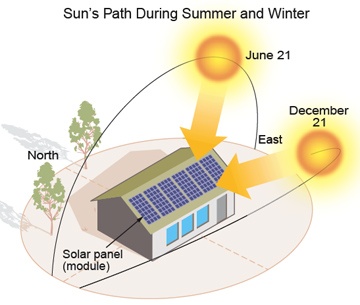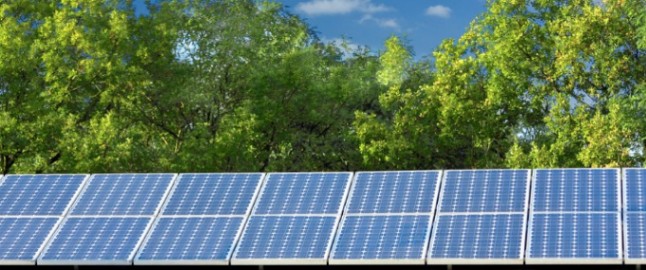Impact of Roof Orientation and Trees On The Output of Solar Panels

Solar panels take in sunlight as raw material and provide electricity (direct current) as the output. Thus, it is no rocket science that the power output will be maximum when:
- The efficiency of the solar panels is high. Efficiency depends on the type of solar panel used. You can read more about it here.
- The solar panels receive the maximum possible sunlight at right angles through the course of the day.
One of the most important factors that affect the amount of incident sunlight is the orientation of the roof with respect to the sun. Let us understand what roof orientation is and its impact on the solar panel’s performance.
Everything About Roof Orientation:
Nowadays, certain solar panels come with a solar tracking system that keeps following the sun to ensure maximum output. However, these are pretty expensive and end up taking too much roof space. Till solar trackers become more affordable, roof orientation will continue to significantly impact solar power output.
Simply put, roof orientation is the direction that your roof faces, and technically, it is the azimuth angle of the roof.
The Best Roof Orientation For Solar Panels:
The best orientation is the one that ensures that the panels receive the highest intensity of sunlight for the maximum time possible.
For people living in the northern hemisphere, solar panels work the best when they face the True South. For people in the southern hemisphere, True North orientation gives the maximum sunlight to the panels.
True North/South vs Magnetic North/South:
True North isn’t the same as the Magnetic North. While a magnetic compass aligns with the magnetic poles, true north and south directions point towards the geographic North pole (in Antarctica) and South pole respectively. You can find the true south direction by using google earth or the shortest shadow method.
Best Angle For Solar Panels:
The angle or tilt of solar panels is also a factor that affects the electricity output of a solar power system. However, it is not as important a factor as the direction/orientation of the roof. Generally speaking, in the northern hemisphere, solar panels placed at a tilt of 15°- 20° and facing south give the maximum output. More specifically, placing the solar panels at an angle equal to the latitude of the place is considered as the best practice. For flat roofs, solar mounts can be used to set up the panels at the desired angle.
The latitude of a place can easily be figured out by using google earth or a simple map of the place of installation.
Minor Modifications:
As a matter of fact, the sunlight received during the noon isn't hindered by any intervening buildings or objects. Whereas during the evening the sunlight density may fall down as there may be obstructions in the path of sunlight.
Depending on your specific requirements, the exact changes can be decided after discussing with your solar panel installer as every roof needs individual assessment.
How Much Is The Impact?
Solar panels directly facing East or West produce up to 20% less electricity than the panels facing South. These effects can be minimized by adjusting the angle at which the panels are installed. Also, even after considering the 10-20% loss due to roof orientation, solar panels in India will easily generate enough electricity to meet your everyday demands.
Impact of Trees on Solar Panel’s Performance

A common cause of concern among people who are looking to install rooftop solar is whether any trees surrounding their house can affect their solar panels’ performance.
To determine that, it is important to confirm whether the trees are directly blocking the solar panels. Since the Sun’s rays serve as fuel for solar panels, any object that obstructs their direct exposure to sunlight can have a negative effect on their performance. However, in most cases, trimming off a few branches can be enough to remove the obstruction. This eliminates the need for cutting down the whole tree and you can enjoy both the clean electricity and the greenery.
Since most of the panels have a life span of around 25 years, trees that might seem harmless now can possibly block sunlight decades later. So, solar owners should plant new saplings after deciding the spot judiciously.
 Unergia
Unergia